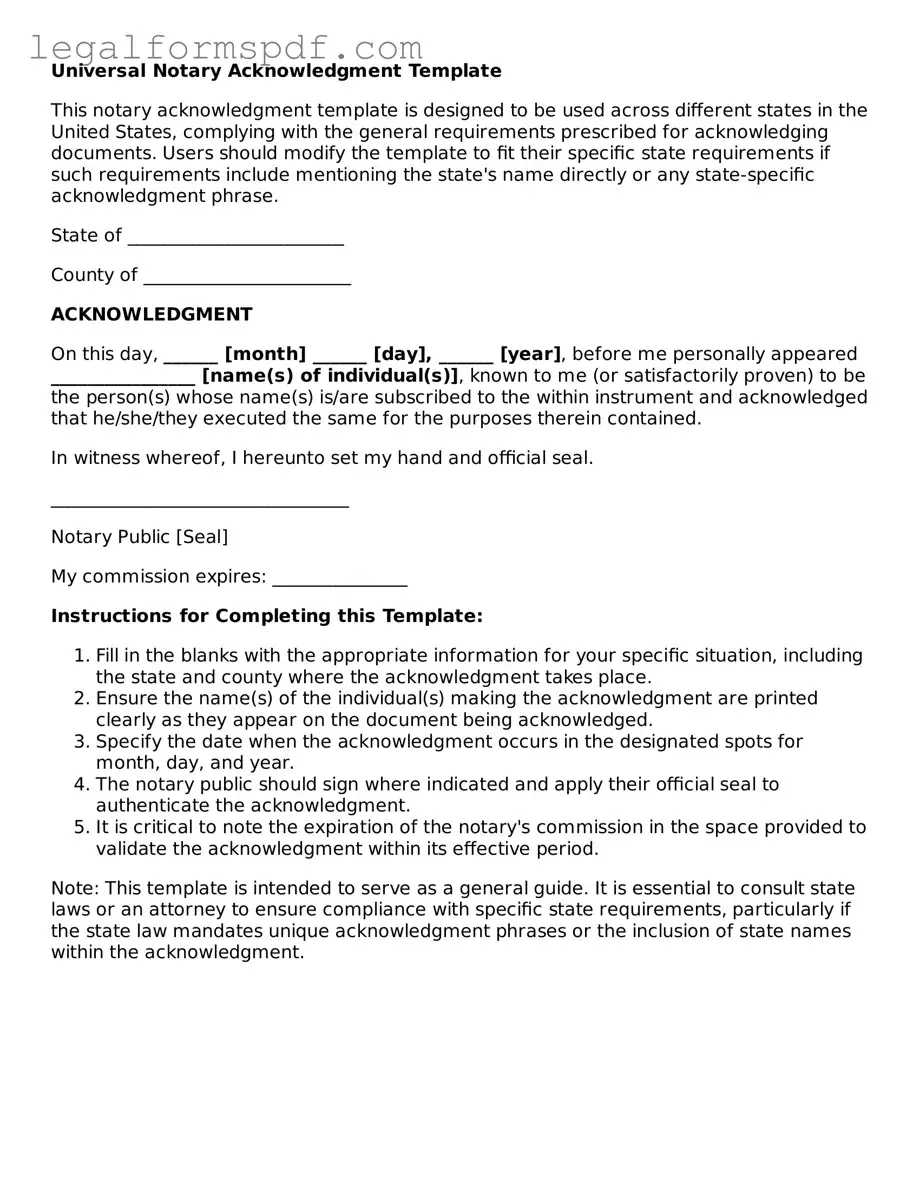What is a Notary Acknowledgement form?
A Notary Acknowledgement form is a legal document that a notary public uses to confirm the identity of the signer(s) of a document. It certifies that the individual(s) presented valid identification, appeared before the notary, and acknowledged signing the document willingly and for the purposes stated within it. The form provides a layer of verification, lending credibility and legal weight to the signed document.
Why do I need a Notary Acknowledgement?
Many legal documents, such as deeds, mortgages, and powers of attorney, require a notary acknowledgement to ensure the authenticity of the signature and to protect against fraud. This step helps parties involved trust that the signer is indeed who they claim to be and that they truly consent to the terms of the document. It’s a crucial requirement in numerous financial, legal, and real estate transactions.
Where can I get a Notary Acknowledgement form?
Notary Acknowledgement forms can be obtained from a licensed notary public, legal stationery stores, or online from reputable legal forms websites. It's important to ensure that the form meets the requirements of your state, as notary laws vary from state to state. A notary public or legal professional can help you find the correct form.
What types of identification do I need to present to the notary?
Generally, you must present a valid, government-issued photo ID to the notary public. This includes a driver's license, passport, state-issued ID card, or military ID. The ID must be current or, if expired, must have been issued within a certain number of years specified by the state law where the notarization takes place.
Can a Notary Acknowledgement be completed without me being present?
No, the essence of a Notary Acknowledgement is the in-person verification of the signer’s identity and voluntary signing of the document. The signer must personally appear before the notary public for the document to be notarized. This requirement helps prevent fraud and ensures the integrity of the signing process.
What if I am unable to physically appear before a notary due to illness or mobility issues?
In cases where an individual is unable to appear before a notary due to health or mobility issues, alternatives such as mobile notary services may be available. Some states also allow for remote online notarization (RON), where the notarization can occur via a secure video link. However, availability varies by state, and specific requirements must be met for remote notarization.
How long does a Notary Acknowledgement take?
The actual notarization process typically takes just a few minutes once you are with the notary. However, the total time may vary depending on the document's complexity and the availability of the notary. It’s advisable to schedule an appointment and check in advance if any preparation is needed for your document.
What is the difference between a Notary Acknowledgement and a Jurat?
While a Notary Acknowledgement confirms the identity of the signer and their acknowledgment of signing the document, a Jurat certifies that the document was signed in the notary’s presence and that the signer swore to or affirmed the truthfulness of the document's contents. The key difference lies in the oath or affirmation taken for a Jurat, which is not required for an Acknowledgement.
Is there a fee for notarization?
Yes, notaries typically charge a fee for their services, including performing a Notary Acknowledgement. Fees vary by state, with each state setting a maximum fee that notaries may charge. It's a good idea to inquire about the fee in advance.
What happens after the Notary Acknowledgement is completed?
Once the Notary Acknowledgement is completed, the notary will affix their official seal or stamp and sign the document, making it notarized. The document is then legally recognized as notarized, and it can proceed to the next step of your transaction or be recorded as required. Always ensure to keep a copy for your records.
